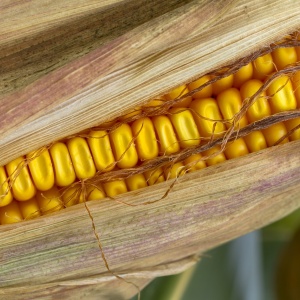
This paper models how integrating crop production - specifically maize, wheat and rice - into global land restoration efforts could impact food security, carbon sequestration and greenhouse gas emissions. The paper’s scenarios look at how to achieve the Bonn Challenge, which is a global agreement to restore 350 million hectares of deforested or degraded land by 2030.
Three scenarios are considered:
- Business as usual (BAU), with no restoration.
- Meeting the targets of the Bonn Challenge by prioritising forest-based restoration, using as little agricultural restoration as possible.
- Meeting the targets of the Bonn Challenge by using as much agricultural restoration as possible (and relatively little forest-based restoration), using so-called climate-smart agricultural practices including no-till, integrated soil fertility management and improved nitrogen use efficiency.
The aim of the latter two scenarios is to provide feasible upper and lower bounds for the extent to which agriculture-based restoration strategies are needed for meeting the Bonn Challenge targets. As the authors point out, policymakers would probably choose a path that lies somewhere between the two extremes.
Under the BAU scenario, production of the three crops is expected to grow, while population growth and dietary change (e.g. growing demand for maize as livestock feed) will drive their prices up by 2030 (by 34% for maize, 24% for rice and 16% for wheat). The population at risk of hunger would decrease by 31.5% relative to 2010, which would be possible despite higher prices because of rising incomes.
In the two restoration scenarios, food prices are still higher in 2030 than in 2010, but are slightly slower than in the BAU scenario, with lower prices seen when agricultural restoration is prioritised than when forest-based restoration is prioritised. This is because both restoration scenarios see a slight increase in crop production over BAU, more so when agricultural restoration is prioritised, because conservation practices can improve production on degraded agricultural land.
As a result of lower food prices, somewhere between 13 and 28 million fewer people would be at risk of hunger when prioritising agricultural restoration compared to BAU (an additional 2.3% to 4.8% beyond the 31.5% reduction seen in BAU); prioritising forest-based restoration still results in 2 to 12 million fewer people at risk of hunger than in BAU (an additional 0.4% to 2.0% beyond the 31.5% reduction seen in BAU).
Abstract
Existing approaches and methodologies that investigate effects of land degradation on food security vary greatly. Although a relatively rich body of literature that investigates localised experiences, geophysical, and socioeconomic drivers of land degradation, and the costs and benefits of avoiding land degradation already exists, less rigorously explored are the global effects of restoring degraded landscapes for the health of the land, the climate, and world food security. The current scale of land degradation is such that the problem can be meaningfully addressed only if local successes are upscaled and a large number of landowners and land managers implement restoration activities. Significant global efforts to address degradation exist, but studies that evaluate the global benefits of these efforts generally do not account for global market forces and the complex web of relationships that determine the effects of wide-scale restoration on production and food security. This paper provides important insights into how a full integration of crop production in restoration efforts could impact food production levels, food availability, forest carbon stocks, and Greenhouse gas emissions.
Reference
De Pinto, A., Cenacchi, N., Robertson, R., Kwon, H.Y., Thomas, T., Koo, J., Begeladze, S. and Kumar, C. (2020). The Role of Crop Production in the Forest Landscape Restoration Approach—Assessing the Potential Benefits of Meeting the Bonn Challenge. Frontiers in Sustainable Food Systems, 4, p.61.
Read the full paper here. See also the Foodsource building block What is food security?







Post a new comment »